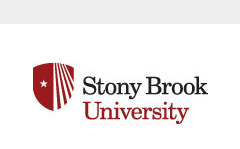Document Type
Full Paper
Location
Charles B. Wang Center
Event Website
http://www.centerfornewsliteracy.org/globalconference2017/
Keywords
news literacy, journalism, media, news, IMVAIN, media bias, audience bias, cognitive dissonance, critical thinking, mindfulness, compassionate listening, middle path, news framing theory, fake news, verification, independence, accountability, fairness, balance
Start Date
8-14-2017 10:30 AM
End Date
8-14-2017 12:00 PM
Description
One challenge for the news literacy instructor/lecture/trainer is to tailor lessons to different class settings. Fortunately, I have had opportunities to design news literacy courses for different class sizes, from small groups to big classes, and for different time durations, from a 3-‐session training course to 10-‐ week and 15-‐week courses, as well as for students of different cultures, from Vietnamese students to Chinese and American students.
In this paper, I primarily review my experience designing and teaching News Literacy courses for two 30-‐ student classes at Ohio University and University of Social Sciences and Humanities. In addition, I share my experience handling a 100-‐student class at the University of Social Sciences and Humanities and the 3-‐session training courses at the High School for Gifted Students. I will analyze and reflect on the feedback from students. At the end of the paper, I also discuss news framing theory, which I found to be one of the best theories for tackling audience bias, and several elements borrowing from the media literacy conferences that I attended in July, 2016.
I have been teaching and adjusting both my methods and lessons while taking into consideration cultural differences. I sense a lot of confusion and frustration from my students at the beginning of each course while they absorb the new ideas I introduce and adapt to my teaching style. But in the end, I have discovered that the struggles of both the teacher and the students actually help produce the best outcomes for teaching News Literacy. We both sharpen our critical thinking skills over coping with information overload and processing multidimensional news and information interpretation.
References
Digital Resource Center of the Center for News Literacy. The 14 Lessons. Retrieved from http://drc.centerfornewsliteracy.org/ on March 12, 2017.
McLeod, D. M., Shah, D. V. (2015). News frames and national security: Covering Big Brother. NY: Cambridge University Press.
Potter, J.W. (2013). Media literacy. Thousand Oaks, Calif.: SAGE Publications.
Included in
Customizing News Literacy Course in Different Class Settings
Charles B. Wang Center
One challenge for the news literacy instructor/lecture/trainer is to tailor lessons to different class settings. Fortunately, I have had opportunities to design news literacy courses for different class sizes, from small groups to big classes, and for different time durations, from a 3-‐session training course to 10-‐ week and 15-‐week courses, as well as for students of different cultures, from Vietnamese students to Chinese and American students.
In this paper, I primarily review my experience designing and teaching News Literacy courses for two 30-‐ student classes at Ohio University and University of Social Sciences and Humanities. In addition, I share my experience handling a 100-‐student class at the University of Social Sciences and Humanities and the 3-‐session training courses at the High School for Gifted Students. I will analyze and reflect on the feedback from students. At the end of the paper, I also discuss news framing theory, which I found to be one of the best theories for tackling audience bias, and several elements borrowing from the media literacy conferences that I attended in July, 2016.
I have been teaching and adjusting both my methods and lessons while taking into consideration cultural differences. I sense a lot of confusion and frustration from my students at the beginning of each course while they absorb the new ideas I introduce and adapt to my teaching style. But in the end, I have discovered that the struggles of both the teacher and the students actually help produce the best outcomes for teaching News Literacy. We both sharpen our critical thinking skills over coping with information overload and processing multidimensional news and information interpretation.
References
Digital Resource Center of the Center for News Literacy. The 14 Lessons. Retrieved from http://drc.centerfornewsliteracy.org/ on March 12, 2017.
McLeod, D. M., Shah, D. V. (2015). News frames and national security: Covering Big Brother. NY: Cambridge University Press.
Potter, J.W. (2013). Media literacy. Thousand Oaks, Calif.: SAGE Publications.
https://commons.library.stonybrook.edu/cnlglobalconference/cnl2017/one/1

